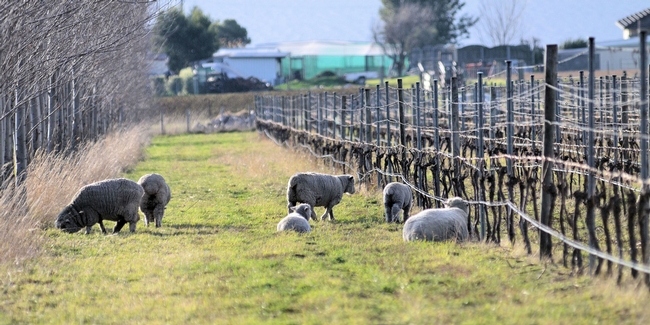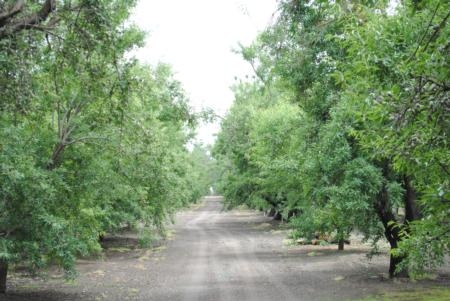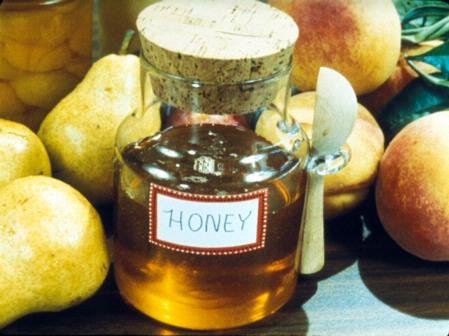Posts Tagged: SAREP
On the topic of vineyard nutrient management, farmers want to know about sheep
The UC Sustainable Agriculture Research and Education Program is working to build an online community for growers facing challenges and trying innovative approaches to how they manage nutrients on the farm. With the help of FarmsReach and Sustainable Conservation, we've been working to build up an online group based on nutrient management to discuss a wide array of practices. For two weeks in January, we hosted a discussion on nutrient management for vineyards, particularly in times of drought.
In a recent Capital Public Radio story on winemakers struggling with groundwater shortages this year, winemaker Chris Leamy said “the drought has helped to spur change and innovation.” When business as usual is not an option, farmers get creative. Through discussion, informational videos, and a tool kit of resources, farmers and UC advisors shared some of the creative ways that growers are adapting to water limitations and building healthy soil in their vineyards.
One discussion to rise to the surface throughout was the use of animals in vineyard systems. Farmers with experience running animals through their vineyards chimed in with valuable insights.
Some thoughts repeated by several growers were:
- Short breeds like babydoll sheep and tall cordons on vines make sheep less able to graze on the canopy. Some growers use electrified deterrents running parallel to the trellis to allow sheep to stay in the vineyard into the summer with no leaf damage. Growers who kept sheep in vineyards year round described eliminating mowing completely.
- Drip lines need to be tall enough to be out of reach from sheep.
- Move sheep frequently to prevent soil compaction.
- One grower runs chickens through the vineyard at the end of the season, but says to avoid the practice if shoot growth has been too vigorous — the added nutrients from the chickens may give vines an unwanted boost in the spring.
- Growers who use sheep in their vineyards describe significant nutrient inputs from sheep, some to the point of eliminating other fertilizers altogether.
You can follow more of the conversation here. The group of participants is growing (94 strong now!) and we'll be hosting future discussions on different topics. This project is hosted by UC SAREP as part of the Solution Center for Nutrient Management. You can join our mailing list to stay up-to-date with our activities, online discussions, and updates to our website.
Drought-focused soil nutrient management series offered for farmers online
Beginning in November, a free, drought-focused soil nutrient management series for farmers will be hosted online by the University of California Sustainable Agriculture Research & Education Program (UC SAREP), FarmsReach and Sustainable Conservation.
“Farmers and ranchers have to continually adapt their management of soil nutrients to changing conditions,” said Aubrey White, UC SAREP's communication coordinator. “Adaptation during this extreme drought presents a new challenge for growers and researchers alike. This forum dedicated to the issues farmers will face next season is an opportunity to share resources, research and ideas for success.”
Kicking off on Nov. 17, the Nutrient Management Solutions series will offer the agriculture community:
- Online presentations, videos or Q&A with farmers and UC Cooperative Extension advisors on nutrient management and soil fertility, with special focus on tree crops, grapes and dairy farms.
- Facilitated online discussions in the active FarmsReach Conversations, moderated by Series presenters. (Join the Nutrient Management Solutions Group in FarmsReach to participate.)
- A new “Soil Nutrient Management Toolkit” in FarmsReach, with selected practical resources and info sheets for farmers of all crop and product types.
The online series is part of the Solution Center for Nutrient Management—a growing resource for nutrient management research and information, online and in-person created by UC SAREP.
The presentations, videos and facilitated online Q&A will be hosted in three sections:
- Nov. 17-30 – Nutrient Management in Times of Drought: Tree Crops
- December (dates to be announced) – Nutrient Management in Times of Drought: Wine Grapes
- January (dates to be announced) – Nutrient Management in Times of Drought: Dairy Forage Crops
To get updates and announcements, or to share your ideas for the drought-focused Nutrient Management Solutions series, sign up for free at www.farmsreach.com. You can also go directly to the online group within FarmsReach, http://www.farmsreach.com/nutrient-mgmt-series, and follow news on Twitter at #AgSolutionCenter.
About UC SAREP
The University of California Sustainable Agriculture Research & Education Program (UC SAREP) a program in UC Division of Agriculture and Natural Resources, provides leadership and support for scientific research and education in agricultural and food systems that are economically viable, conserve natural resources and biodiversity, and enhance the quality of life in the state's communities. SAREP serves farmers, farmworkers, ranchers, researchers, educators, regulators, policy makers, industry professionals, consumers and community organizations across the state.
About FarmsReach
Founded in 2007, FarmsReach is a network that connects small- and medium-scale farms to the products, support and services they need to be successful. By partnering with farmer members and agriculture organizations, FarmsReach offers a growing suite of services that empower farmers to make better business decisions, access new markets, preserve the environment and strengthen rural communities.
About Sustainable Conservation
Sustainable Conservation partners with business, agriculture and government to find practical ways that the private sector can protect clean air, clean water and healthy ecosystems. The independent nonprofit organization leads powerful collaborations that produce lasting solutions and sustain the vitality of both the economy and the environment.
California's honeypot, from cradle to grave
September is national honey month, a time when pollination season has largely ended and many commercial beehives are harvested for their honey. Now for the first time, beekeepers have a new tool to track just how much energy their efforts take, and the amount of greenhouse gases those efforts emit. With growing consumer interest in the carbon foot prints of products and cap-and-trade legislation under AB32, emissions-tracking is becoming increasingly important for agricultural producers - including beekeepers and honey makers.
Beekeepers are trucking some 1.5 million bee colonies around the state to help pollinate California’s 760,000 acres of almond orchards and 50 other fruit and nut crops. They continue to pollinate vegetable crops throughout the summer and early fall. Beyond pollination, bees are big business here. California is the second largest producer of honey in the country, producing over 27 million pounds of honey in 2010.
The chain of production leading to pollination and honey processing is long. Apiaries require hive construction and management, bee travel for nectar and pollination, honey extraction, processing and packaging. And each stage requires energy inputs in the form of fuel, electricity or nutrients.
Researchers at UC Davis and the UC Sustainable Agriculture Research and Education Program (SAREP) have created a way to calculate how much energy is required to produce a honey product, and the amount of greenhouse gas emissions that are created throughout the process. Looking at the chain of production for an entire operation, researchers can estimate the carbon footprint for a single kilogram of honey.
Recently, SAREP released a honey carbon calculator to help individual beekeepers, both hobbyist and commercial, track the greenhouse gases of their own apiaries.
The calculator is based on a life cycle assessment (LCA) of honey production, a cradle-to-grave accounting system used to track the energy requirements of products as diverse as cement, hybrid cars and almonds.
“With agriculture, a life cycle has to include all of the upstream materials acquisition and energy acquisition before you even get to the agricultural field. So we’re looking at the impacts of all of that,” said Sonja Brodt, program coordinator at UC SAREP who works on life cycle assessments.
The LCA of honey production is the first of its kind in the U.S. Alissa Kendall, assistant professor in Civil and Environmental Engineering, spearheaded the effort to assess honey’s greenhouse gas impact. To her surprise, “the big finding was the role of transportation in the life cycle.” Transportation of bee colonies for pollination and over-wintering uses the greatest energy and creates the greatest emissions.
Tracking these emissions is ultimately a benefit to a farmer’s bottom line, said Kendall.
“There’s occasionally hostility to climate change and greenhouse gas research because it’s a very politicized issue," she said. But researchers find that “efficiency in operations is often well aligned with reducing greenhouse gases and climate footprint . . . and often goes hand in hand with reducing energy use and dependence on fossil fuels and oil.”
Elias Marvinney, a graduate student researcher focusing on agriculturally-produced greenhouse gas emissions said there are concrete financial rewards for being a net-carbon sequesterer.
"If you can put a carbon negative sticker on your product, then you just expanded your market," Marvinney said.
Currently, honey producers and processors can input their records into the carbon calculator to determine which part of their operations have the greatest emissions and see where the greatest improvements can be made. The calculator can be found at: http://asi.ucdavis.edu/sarep/sfr/life cycleassessments/honey
The calculator comes with a guide. Sonja Brodt of UC SAREP can address questions.
The article, Carbon footprint and air emissions inventories for US honey production: case studies, written by Alissa Kendall, Juhong Yuan and Sonja Brodt, was published in September's issue of The International Journal of Lifecycle Assessments.




